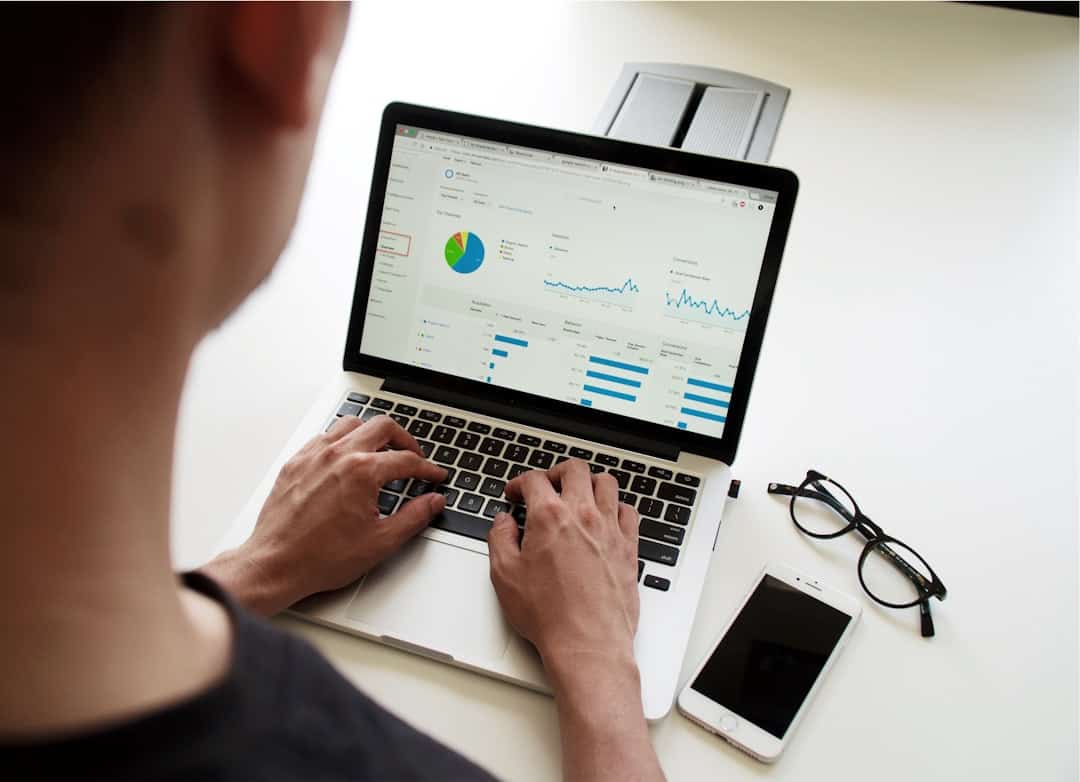Artificial Intelligence (AI) is a field of computer science focused on developing systems capable of performing tasks that typically require human intelligence. These tasks include learning, problem-solving, natural language comprehension, and pattern recognition. Neural networks are a fundamental component of AI, consisting of algorithms inspired by the structure and function of the human brain.
These networks are composed of interconnected nodes, or “neurons,” organized in layers that collaborate to process and analyze complex data. The effectiveness of neural networks relies on their ability to learn from large datasets. This learning process, known as machine learning, enables AI systems to make decisions and predictions without explicit programming.
As neural networks are exposed to more data, they continuously refine their performance and accuracy. Neural networks have diverse applications across various industries. They are instrumental in image and speech recognition technologies, natural language processing systems, and the development of autonomous vehicles.
A solid understanding of AI and neural networks is crucial for individuals and organizations seeking to leverage this rapidly evolving technology and its potential benefits.
Key Takeaways
- AI and neural networks are based on the concept of simulating the human brain to process information and make decisions.
- AI and neural networks play a crucial role in modern technology, powering applications such as virtual assistants, recommendation systems, and autonomous vehicles.
- Businesses can leverage AI and neural networks to improve customer service, optimize operations, and make data-driven decisions.
- Ethical considerations around AI and neural networks include issues of privacy, bias, and job displacement.
- Challenges in implementing AI and neural networks include data quality, talent shortage, and regulatory compliance.
The Role of AI and Neural Networks in Modern Technology
AI and neural networks play a crucial role in modern technology, powering many of the innovations that have transformed industries and everyday life. In the field of healthcare, AI is being used to analyze medical images, diagnose diseases, and develop personalized treatment plans. Neural networks are also being used to improve the accuracy of medical diagnoses and to identify patterns in patient data that can lead to better outcomes.
In the automotive industry, AI and neural networks are driving the development of autonomous vehicles, which have the potential to revolutionize transportation and make roads safer. In the realm of finance, AI is being used to detect fraud, automate trading, and personalize financial services for customers. Neural networks are also being used to analyze market trends and make predictions about future economic conditions.
In the field of marketing, AI and neural networks are being used to analyze consumer behavior, personalize advertising, and improve customer service. These technologies are also being used to develop virtual assistants and chatbots that can interact with customers in natural language. The role of AI and neural networks in modern technology is vast and continues to expand as new applications are discovered.
Harnessing the Potential of AI and Neural Networks in Business

Businesses across all industries are increasingly turning to AI and neural networks to gain a competitive edge and drive innovation. One of the key ways that businesses are harnessing the potential of AI and neural networks is through data analysis. These technologies can process and analyze large volumes of data at a speed and scale that would be impossible for humans to achieve.
This allows businesses to gain valuable insights into customer behavior, market trends, and operational efficiency. AI and neural networks are also being used to automate repetitive tasks, freeing up employees to focus on more strategic and creative work. This can lead to increased productivity and cost savings for businesses.
In addition, these technologies are being used to develop personalized customer experiences, such as recommendation systems that suggest products or content based on individual preferences. Businesses are also using AI and neural networks to improve decision-making processes by providing predictive analytics that can help identify potential risks and opportunities. Harnessing the potential of AI and neural networks in business requires a strategic approach and a deep understanding of how these technologies can be applied to specific challenges and opportunities.
The Ethical Implications of AI and Neural Networks
| Topic | Metrics |
|---|---|
| Privacy | Number of data breaches involving AI and neural networks |
| Algorithmic Bias | Percentage of AI systems exhibiting bias towards certain demographics |
| Autonomy | Instances of AI making decisions without human intervention |
| Accountability | Number of legal cases involving AI and neural network responsibility |
As AI and neural networks become more integrated into our daily lives, it is important to consider the ethical implications of these technologies. One of the key concerns is the potential for bias in AI systems, which can lead to unfair or discriminatory outcomes. This can occur when AI systems are trained on data that reflects existing biases in society, such as gender or racial stereotypes.
It is crucial for developers and users of AI systems to be aware of these biases and take steps to mitigate them. Another ethical consideration is the impact of AI on employment. As AI and neural networks automate more tasks, there is a risk of job displacement for workers in certain industries.
It is important for businesses and policymakers to consider how to support workers who may be affected by these changes, such as through retraining programs or social safety nets. Privacy is also a significant ethical concern when it comes to AI and neural networks, as these technologies often rely on large amounts of personal data. It is essential for businesses and organizations to prioritize data security and transparency in their use of AI.
Overcoming Challenges in Implementing AI and Neural Networks
While the potential benefits of AI and neural networks are vast, there are also significant challenges that must be overcome in order to successfully implement these technologies. One of the key challenges is the need for large amounts of high-quality data to train neural networks effectively. This can be particularly difficult for businesses that do not have access to extensive datasets or struggle with data quality issues.
Another challenge is the complexity of developing and maintaining AI systems, which requires specialized expertise in areas such as machine learning, data science, and software engineering. Regulatory and ethical considerations also present challenges for businesses looking to implement AI and neural networks. There are often legal and ethical requirements around the use of personal data, as well as concerns about bias and fairness in AI systems.
Businesses must navigate these complexities while ensuring that their use of AI complies with relevant regulations and ethical standards. Finally, there is a challenge around public perception and acceptance of AI technologies. Many people have concerns about the impact of AI on privacy, employment, and society as a whole.
Overcoming these challenges requires a thoughtful and strategic approach that takes into account technical, regulatory, ethical, and societal considerations.
The Future of AI and Neural Networks

The future of AI and neural networks holds immense promise for transforming industries and improving everyday life. As these technologies continue to advance, we can expect to see even greater integration into areas such as healthcare, finance, transportation, and entertainment. In healthcare, AI has the potential to revolutionize medical diagnosis and treatment by analyzing vast amounts of patient data to identify patterns and make predictions about disease progression.
In finance, AI can improve risk management, fraud detection, and customer service by analyzing market trends and customer behavior. The development of autonomous vehicles is another area where AI and neural networks will play a significant role in the future. These technologies have the potential to make transportation safer, more efficient, and more accessible for people around the world.
In addition, we can expect to see continued advancements in natural language processing, virtual assistants, and chatbots that will further enhance our ability to interact with machines in a natural and intuitive way. The future of AI and neural networks is bright, with endless possibilities for innovation and improvement across all sectors.
Tips for Leveraging AI and Neural Networks in Your Industry
For businesses looking to leverage the power of AI and neural networks in their industry, there are several key tips to keep in mind. First, it is important to start with a clear understanding of the specific challenges or opportunities that AI can address within your business. This may involve conducting a thorough assessment of your data assets, technical capabilities, and strategic goals.
Once you have identified potential use cases for AI, it is crucial to invest in building the necessary expertise within your organization. This may involve hiring data scientists, machine learning engineers, or other specialized roles. Another important tip is to prioritize data quality and security when implementing AI systems.
High-quality data is essential for training neural networks effectively, so businesses should invest in data management practices that ensure accuracy, completeness, and privacy protection. Additionally, it is important to stay informed about regulatory developments related to AI and ensure that your use of these technologies complies with relevant laws and ethical standards. Finally, businesses should be mindful of the potential impact on employees when implementing AI systems and take steps to support workers through any changes that may arise.
By following these tips, businesses can effectively leverage the power of AI and neural networks to drive innovation and success in their industry.
If you’re interested in learning more about the intersection of AI and neural networks in virtual economies and digital assets, you may want to check out this article on metaverse platforms and ecosystems. This article explores how AI and neural networks are being used to create and manage virtual economies within metaverse platforms, offering a deeper understanding of the role of technology in shaping digital assets.
FAQs
What is AI?
AI, or artificial intelligence, refers to the simulation of human intelligence in machines that are programmed to think and act like humans. This includes tasks such as learning, problem-solving, and decision-making.
What are neural networks?
Neural networks are a type of AI that are modeled after the structure of the human brain. They consist of interconnected nodes, or “neurons,” that work together to process and analyze complex data.
How do neural networks work?
Neural networks work by processing input data through a series of interconnected layers of neurons. Each layer extracts different features from the data, and the network learns to recognize patterns and make predictions based on this information.
What are the applications of AI and neural networks?
AI and neural networks have a wide range of applications, including image and speech recognition, natural language processing, autonomous vehicles, medical diagnosis, and financial forecasting.
What are the benefits of using AI and neural networks?
Some of the benefits of using AI and neural networks include improved efficiency, accuracy, and automation of tasks that would be difficult or time-consuming for humans to perform. They also have the potential to uncover insights and patterns in data that may not be apparent to human analysts.
What are the limitations of AI and neural networks?
Limitations of AI and neural networks include the need for large amounts of data to train the models, the potential for bias in the data and algorithms, and the lack of understanding of how the models arrive at their decisions (the “black box” problem). Additionally, AI and neural networks may not always perform well in situations that differ significantly from the training data.











Leave a Reply